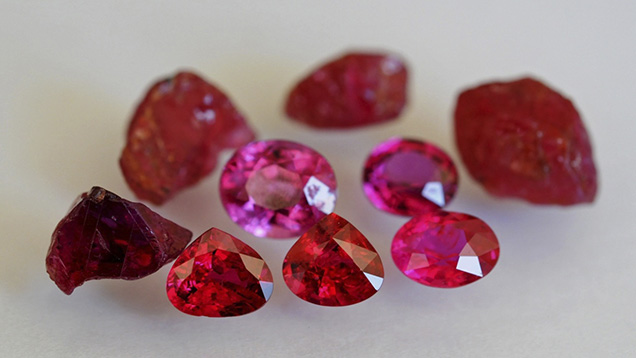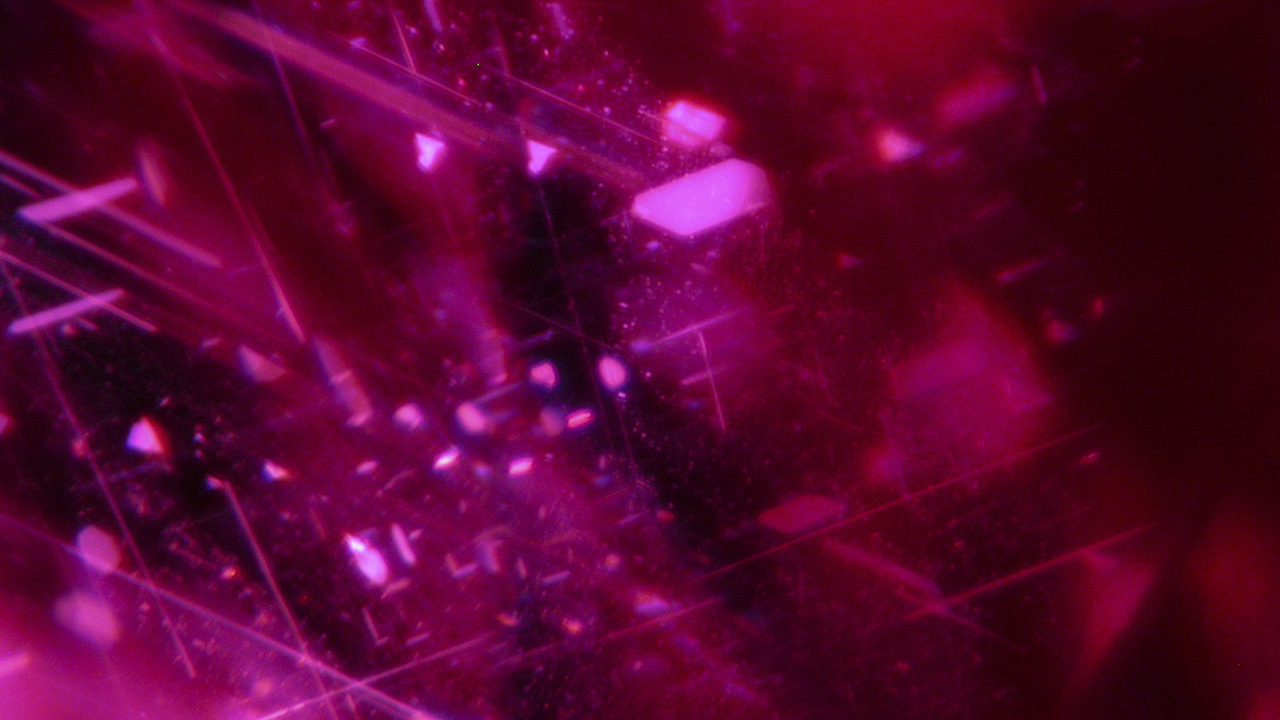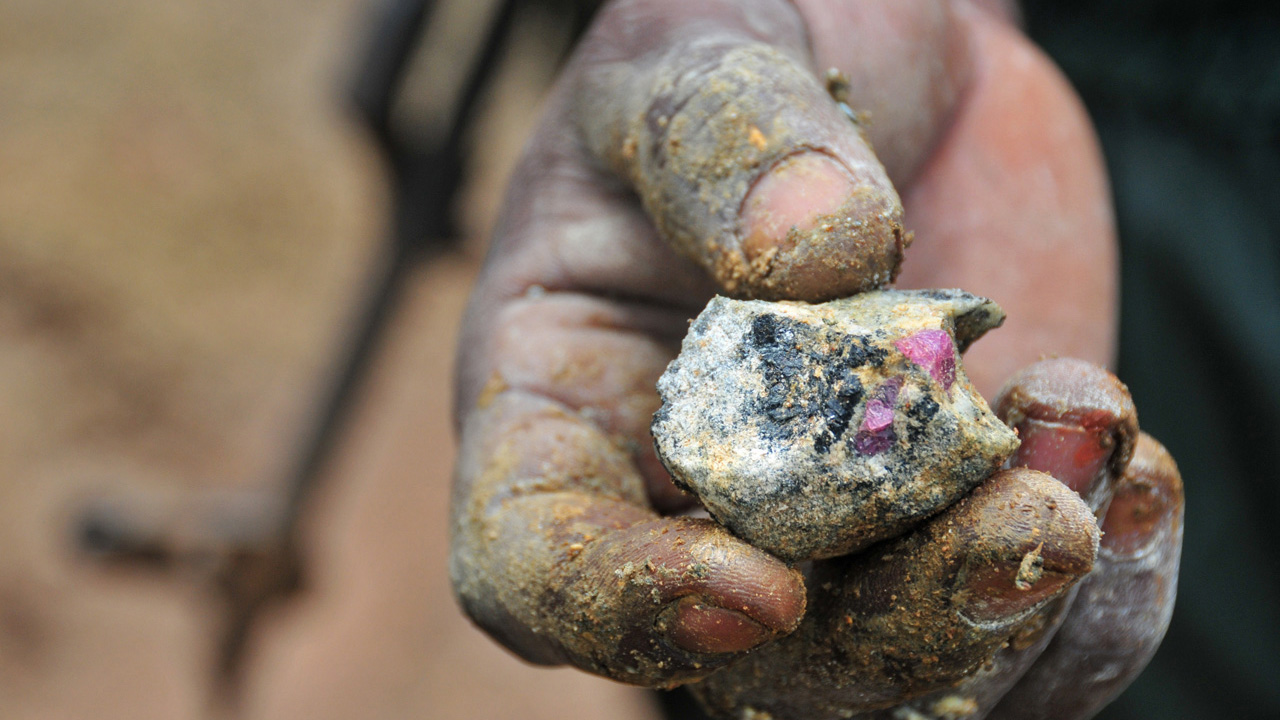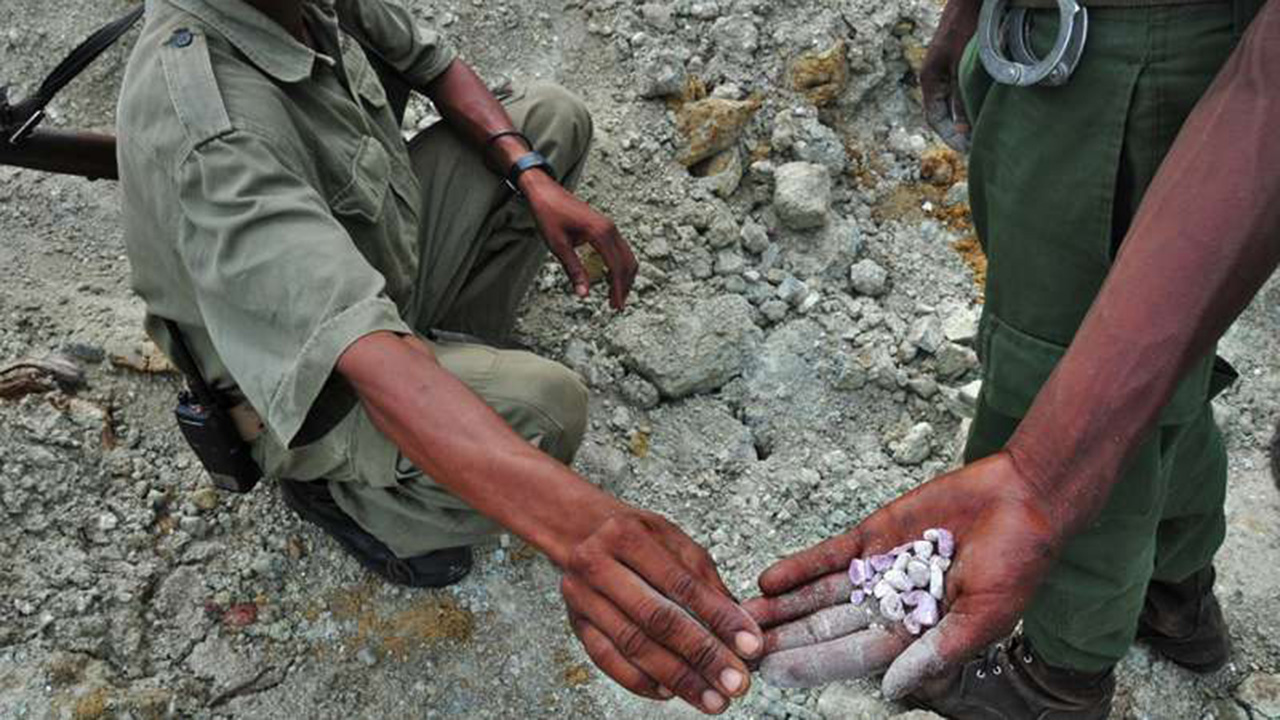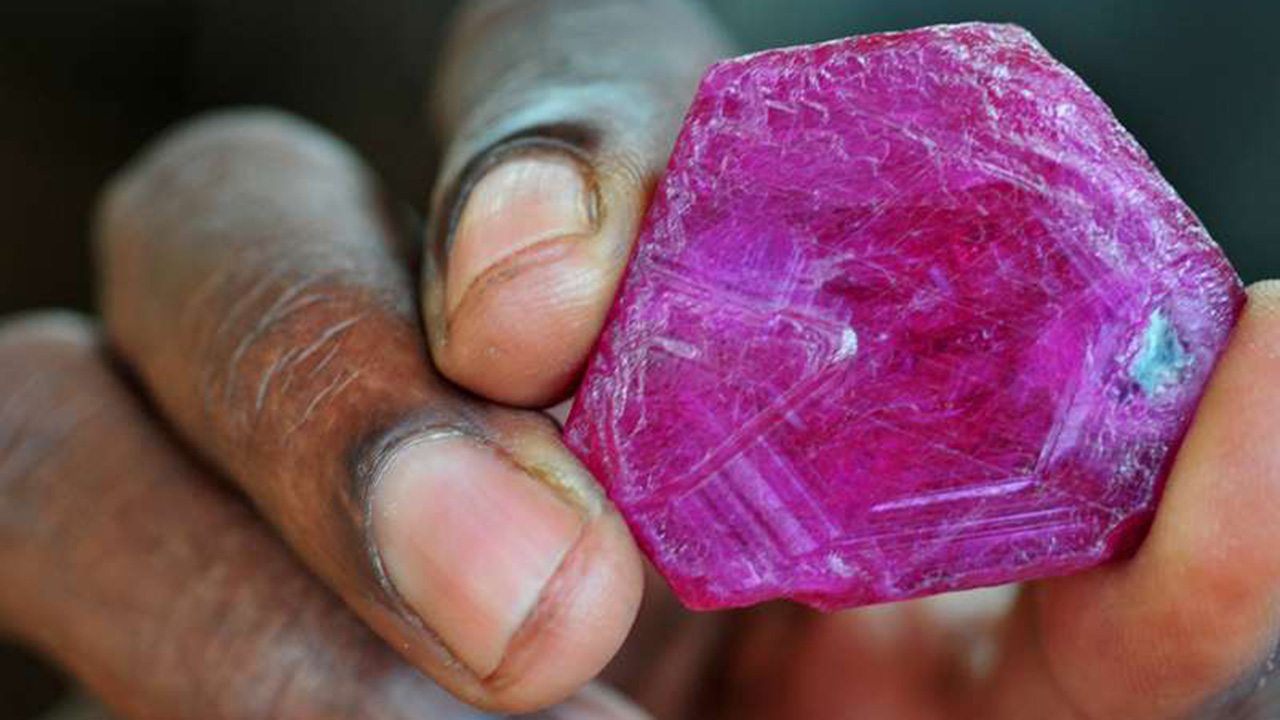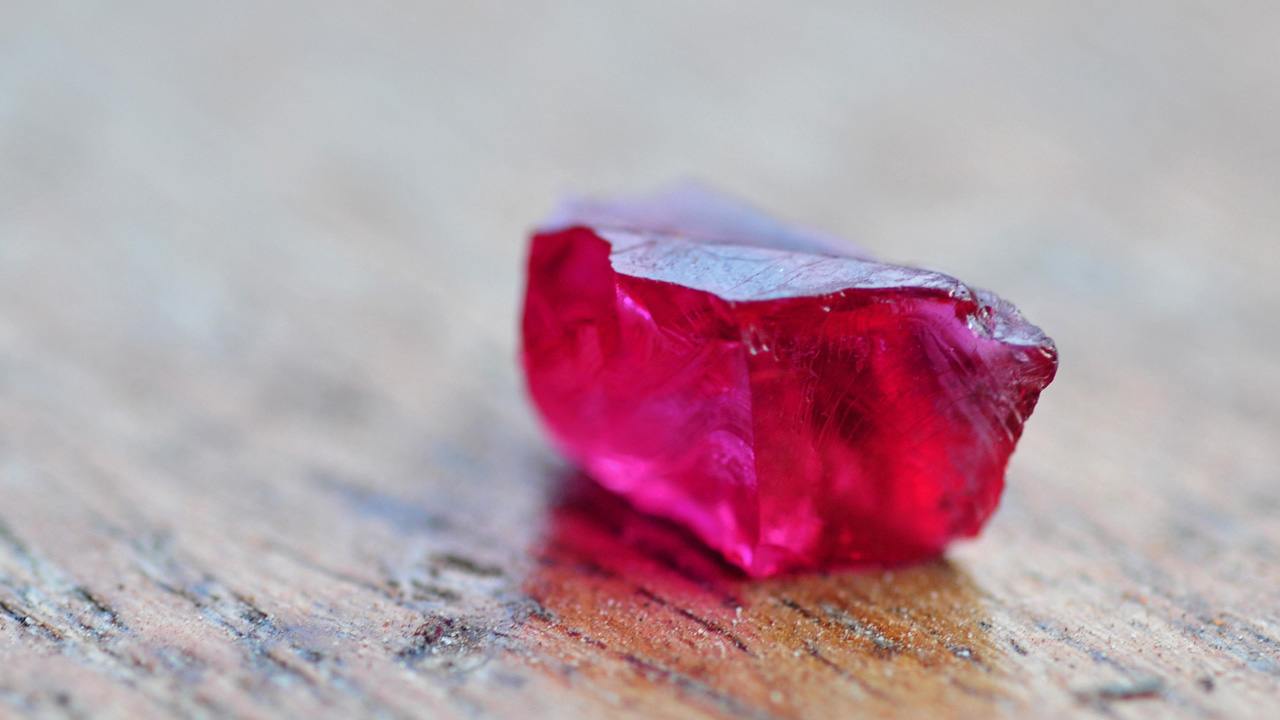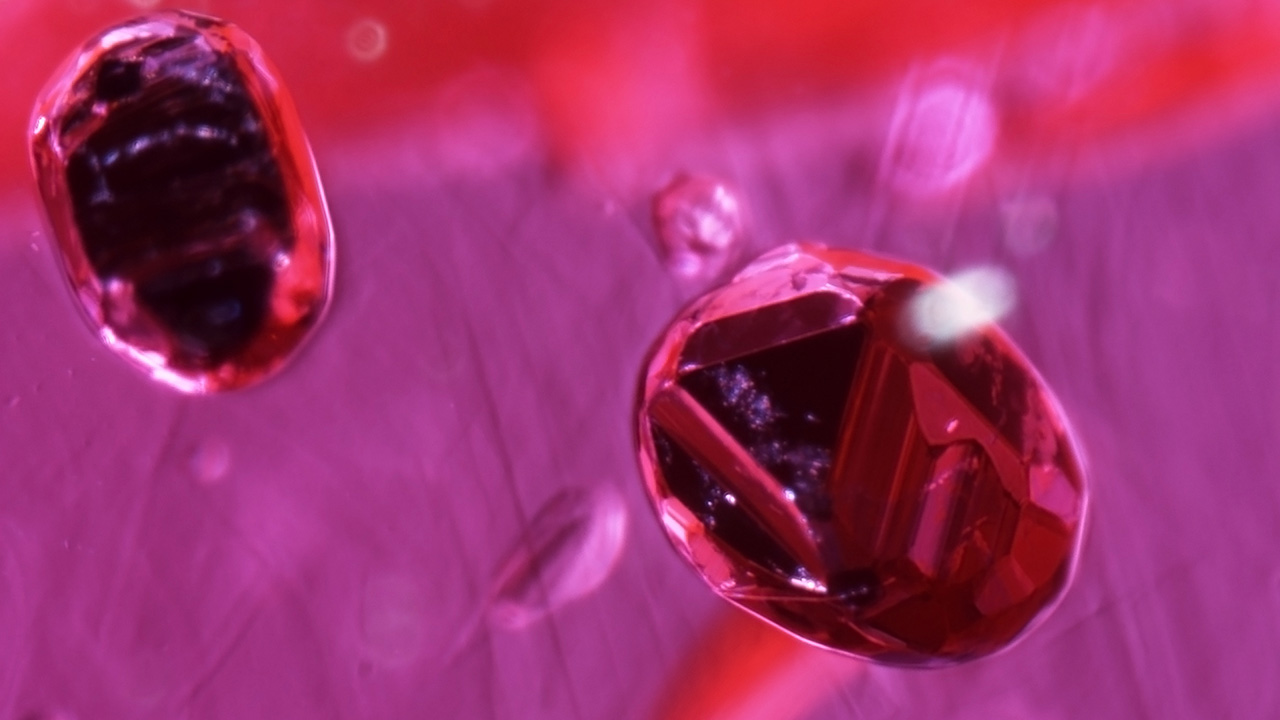Series of Articles on Rubies from Mozambique
March 14, 2014
Rubies from Montepuez, in northern Mozambique, have dominated the Thai market, the world’s major ruby trading center, since the discovery of this deposit in the spring of 2009. GIA has engaged in an extensive study of this material, culminating in October 2013 with the Bangkok laboratory’s most recent paper, “Rubies from the Montepuez Area.”
These specimens are quite different from those traditionally encountered in the market, such as the marble-type rubies from Mogok and Mong Hsu, whose strong fluorescent aspect is related to low iron content, or basalt-related rubies from Thailand and Cambodia, known for their low fluorescence due to higher iron content. Indeed, the new deposit in Montepuez is an amphibole-related deposit similar to those near Winza (Tanzania), M’Sawize (Mozambique), and probably the deposit near Didy (Madagascar), three other ruby deposits discovered fairly recently in Africa.
Amphibole-type rubies generally have higher iron content than those found in marble-related deposits and lower iron content than those from basalt-related deposits. These nontraditional amphibole-type metamorphic stones fill the gap, in terms of chemical composition and appearance, between the highly fluorescent marble-type rubies and the weakly fluorescent basalt-related rubies familiar within the trade.
For gemologists, the fact that the rubies from Montepuez come from an amphibole-related deposit is fascinating. That’s because the combination of the inclusion scene, the chemical fingerprint, and the spectra associated with these stones usually distinguishes them from rubies mined from marble- or basalt-related deposits.
Below are links to publications by GIA gemologists (in chronological order, starting with the most recent) about ruby mining in Mozambique, providing the most complete, up-to-date information on the subject.
GEMFIELDS INAUGURAL ROUGH RUBY AUCTION IN SINGAPORE
By A. Lucas, V. Pardieu
Released July 17, 2014
In June 2014, Gemfields held its first auction of rough ruby from Mozambique. GIA field gemologists went behind the scenes of this groundbreaking event for an insider’s look at the rough gemstone auction world.
Learn More
RUBIES FROM THE MONTEPUEZ AREA
By V. Pardieu, S. Sangsawong, J. Muyal, B. Chauviré, L. Massi, and N. Sturman
Released Oct. 15, 2013
In October 2013, GIA’s Bangkok lab produced a study of the samples collected during the September 2012 expedition. The study featured FTIR and UV-Vis spectra and chemical analysis of one reference sample from each of the four main ruby mining sites in the area. The study also included numerous inclusion photos that will enable the gemologist to more easily identify rubies from Montepuez.
Learn More
UPDATE ON RUBY MINING AND TRADING IN NORTHERN MOZAMBIQUE
By V. Pardieu and B. Chauviré
Published in Winter 2012 Gems & Gemology, Gem News International, pp. 309–311
In 2011, Gemfields acquired the ruby-producing area near Montepuez and began a major mining project. In the summer of 2012, a team of GIA gemologists visited the area to collect samples from the different mining sites for the GIA reference collection.
Learn More
FAPFH/GFF TREATED RUBY FROM MOZAMBIQUE: A PRELIMINARY REPORT
By V. Pardieu, N. Sturman, S. Saesaew, G. Du Toit and K. Thirangoon
Released May 11, 2010
During the spring of 2010, GIA gemologists began collaborating with a Thai gemstone burner who was working on the heat treatment of Mozambique rubies using borax additives. A very similar treatment had been used for about 20 years on Mong Hsu rubies.
Learn More
UPDATE ON RUBIES FROM MOZAMBIQUE
By V. Pardieu, P. Lomthong, J.B. Senoble, L.P. Bryl, and S. Jacquat
Published in Winter 2009 Gems & Gemology, Gem News International, pp. 302–303
A discussion of the November 2009 field expedition to M’sawize, Mozambique, within the Niassa National Reserve, to obtain ruby samples for the GIA research collection.
Learn More
EXPEDITION REPORT TO RUBY MINING SITES IN NORTHERN MOZAMBIQUE
By V. Pardieu, S. Jacquat, J.B. Senoble, L.P. Bryl, R.W. Hughes, and M. Smith
Updated Dec. 23, 2009
In 2009, GIA’s Bangkok lab led three field expeditions to the ruby deposits of Mozambique. During the second expedition, in November 2009, Vincent Pardieu was able to visit the deposit near M’Sawize village in the Niassa province. Finally, in December 2009, we were able to briefly visit the deposit near Montepuez and collect samples for the GIA reference collection.
Learn More
PRELIMINARY OBSERVATIONS ON NEW RUBIES FROM MOZAMBIQUE
By S. McClure and J. Koivula
Published in Fall 2009 Gems & Gemology, Gem News International, pp. 224–225
Results of gemological testing and EDXRF spectroscopy on 24 ruby specimens, received in two separate submissions, reportedly from several different deposits in Mozambique.
Learn More
RUBIES FROM THE NIASSA AND CABO DELGADO REGIONS OF NORTHERN MOZAMBIQUE
By V. Pardieu, J. Thanachakaphad, S. Jacquat, J.B. Senoble, and L.P. Bryl
Updated April 16, 2009
In early 2009, GIA's Bangkok lab released a preliminary study on Niassa province rubies, based on samples (reportedly from Niassa) collected in Chanthaburi, Thailand. In May 2009, less than a year after the arrival of rubies from Niassa on the market, a second important deposit was discovered near the city of Montepuez, in the neighboring province of Cabo Delgado. Mining activity rapidly increased, and rubies from Mozambique (unheated, heated or filled with lead glass) became very common in trading centers such as Thailand, as well as the U.S. and the rest of the world.
Learn More
These specimens are quite different from those traditionally encountered in the market, such as the marble-type rubies from Mogok and Mong Hsu, whose strong fluorescent aspect is related to low iron content, or basalt-related rubies from Thailand and Cambodia, known for their low fluorescence due to higher iron content. Indeed, the new deposit in Montepuez is an amphibole-related deposit similar to those near Winza (Tanzania), M’Sawize (Mozambique), and probably the deposit near Didy (Madagascar), three other ruby deposits discovered fairly recently in Africa.
Amphibole-type rubies generally have higher iron content than those found in marble-related deposits and lower iron content than those from basalt-related deposits. These nontraditional amphibole-type metamorphic stones fill the gap, in terms of chemical composition and appearance, between the highly fluorescent marble-type rubies and the weakly fluorescent basalt-related rubies familiar within the trade.
For gemologists, the fact that the rubies from Montepuez come from an amphibole-related deposit is fascinating. That’s because the combination of the inclusion scene, the chemical fingerprint, and the spectra associated with these stones usually distinguishes them from rubies mined from marble- or basalt-related deposits.
Below are links to publications by GIA gemologists (in chronological order, starting with the most recent) about ruby mining in Mozambique, providing the most complete, up-to-date information on the subject.
GEMFIELDS INAUGURAL ROUGH RUBY AUCTION IN SINGAPORE
By A. Lucas, V. Pardieu
Released July 17, 2014
In June 2014, Gemfields held its first auction of rough ruby from Mozambique. GIA field gemologists went behind the scenes of this groundbreaking event for an insider’s look at the rough gemstone auction world.
Learn More
RUBIES FROM THE MONTEPUEZ AREA
By V. Pardieu, S. Sangsawong, J. Muyal, B. Chauviré, L. Massi, and N. Sturman
Released Oct. 15, 2013
In October 2013, GIA’s Bangkok lab produced a study of the samples collected during the September 2012 expedition. The study featured FTIR and UV-Vis spectra and chemical analysis of one reference sample from each of the four main ruby mining sites in the area. The study also included numerous inclusion photos that will enable the gemologist to more easily identify rubies from Montepuez.
Learn More
UPDATE ON RUBY MINING AND TRADING IN NORTHERN MOZAMBIQUE
By V. Pardieu and B. Chauviré
Published in Winter 2012 Gems & Gemology, Gem News International, pp. 309–311
In 2011, Gemfields acquired the ruby-producing area near Montepuez and began a major mining project. In the summer of 2012, a team of GIA gemologists visited the area to collect samples from the different mining sites for the GIA reference collection.
Learn More
FAPFH/GFF TREATED RUBY FROM MOZAMBIQUE: A PRELIMINARY REPORT
By V. Pardieu, N. Sturman, S. Saesaew, G. Du Toit and K. Thirangoon
Released May 11, 2010
During the spring of 2010, GIA gemologists began collaborating with a Thai gemstone burner who was working on the heat treatment of Mozambique rubies using borax additives. A very similar treatment had been used for about 20 years on Mong Hsu rubies.
Learn More
UPDATE ON RUBIES FROM MOZAMBIQUE
By V. Pardieu, P. Lomthong, J.B. Senoble, L.P. Bryl, and S. Jacquat
Published in Winter 2009 Gems & Gemology, Gem News International, pp. 302–303
A discussion of the November 2009 field expedition to M’sawize, Mozambique, within the Niassa National Reserve, to obtain ruby samples for the GIA research collection.
Learn More
EXPEDITION REPORT TO RUBY MINING SITES IN NORTHERN MOZAMBIQUE
By V. Pardieu, S. Jacquat, J.B. Senoble, L.P. Bryl, R.W. Hughes, and M. Smith
Updated Dec. 23, 2009
In 2009, GIA’s Bangkok lab led three field expeditions to the ruby deposits of Mozambique. During the second expedition, in November 2009, Vincent Pardieu was able to visit the deposit near M’Sawize village in the Niassa province. Finally, in December 2009, we were able to briefly visit the deposit near Montepuez and collect samples for the GIA reference collection.
Learn More
PRELIMINARY OBSERVATIONS ON NEW RUBIES FROM MOZAMBIQUE
By S. McClure and J. Koivula
Published in Fall 2009 Gems & Gemology, Gem News International, pp. 224–225
Results of gemological testing and EDXRF spectroscopy on 24 ruby specimens, received in two separate submissions, reportedly from several different deposits in Mozambique.
Learn More
RUBIES FROM THE NIASSA AND CABO DELGADO REGIONS OF NORTHERN MOZAMBIQUE
By V. Pardieu, J. Thanachakaphad, S. Jacquat, J.B. Senoble, and L.P. Bryl
Updated April 16, 2009
In early 2009, GIA's Bangkok lab released a preliminary study on Niassa province rubies, based on samples (reportedly from Niassa) collected in Chanthaburi, Thailand. In May 2009, less than a year after the arrival of rubies from Niassa on the market, a second important deposit was discovered near the city of Montepuez, in the neighboring province of Cabo Delgado. Mining activity rapidly increased, and rubies from Mozambique (unheated, heated or filled with lead glass) became very common in trading centers such as Thailand, as well as the U.S. and the rest of the world.
Learn More
